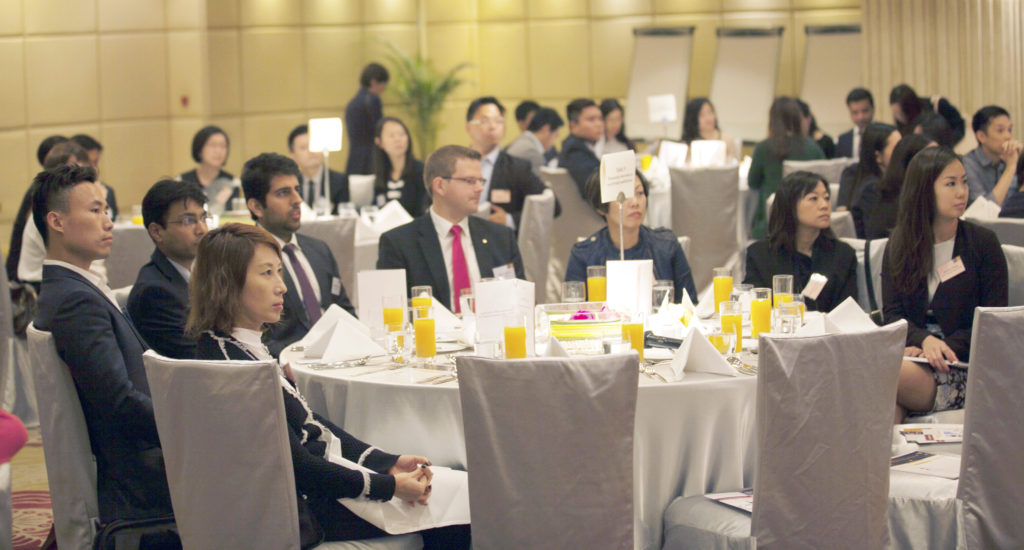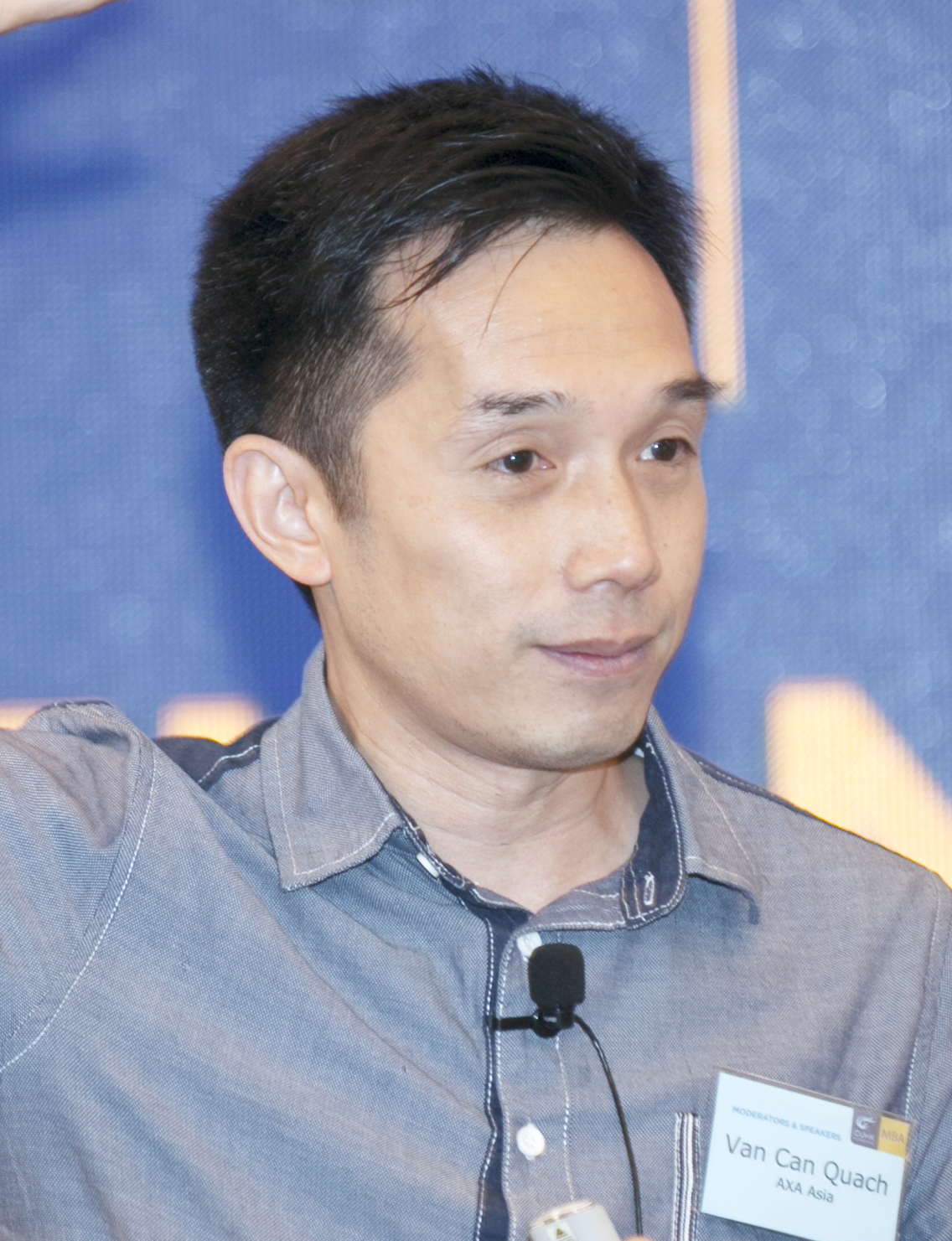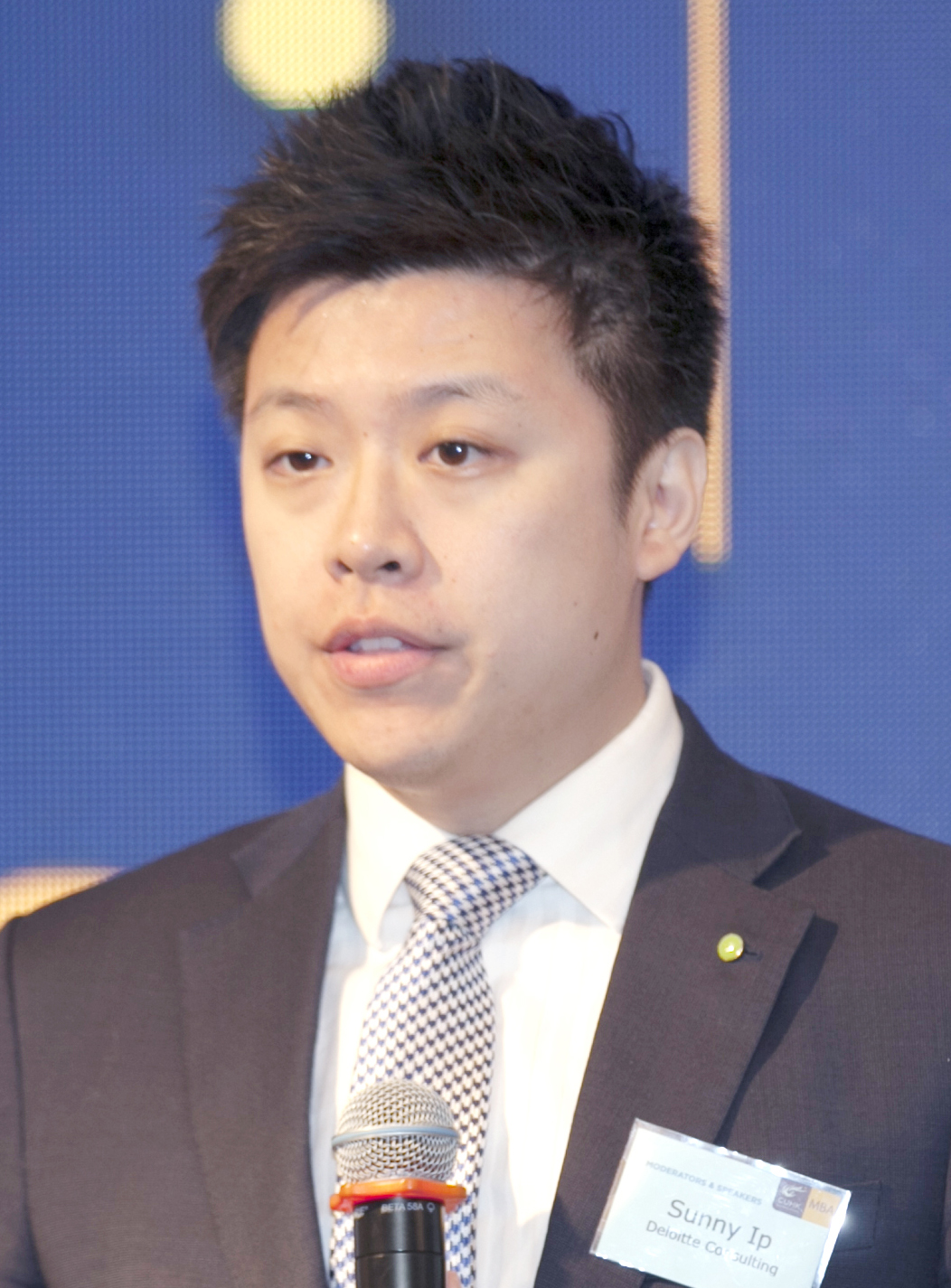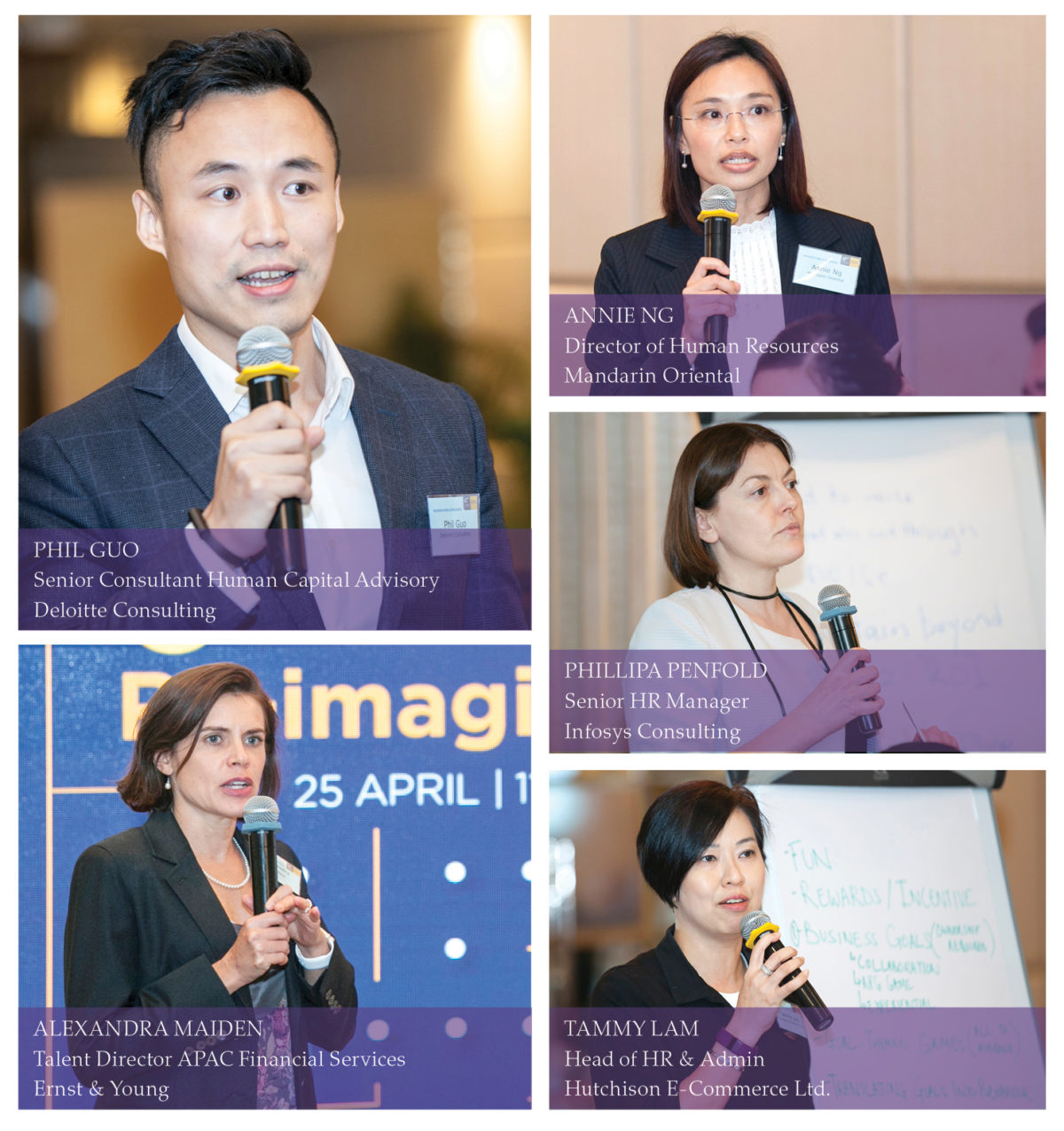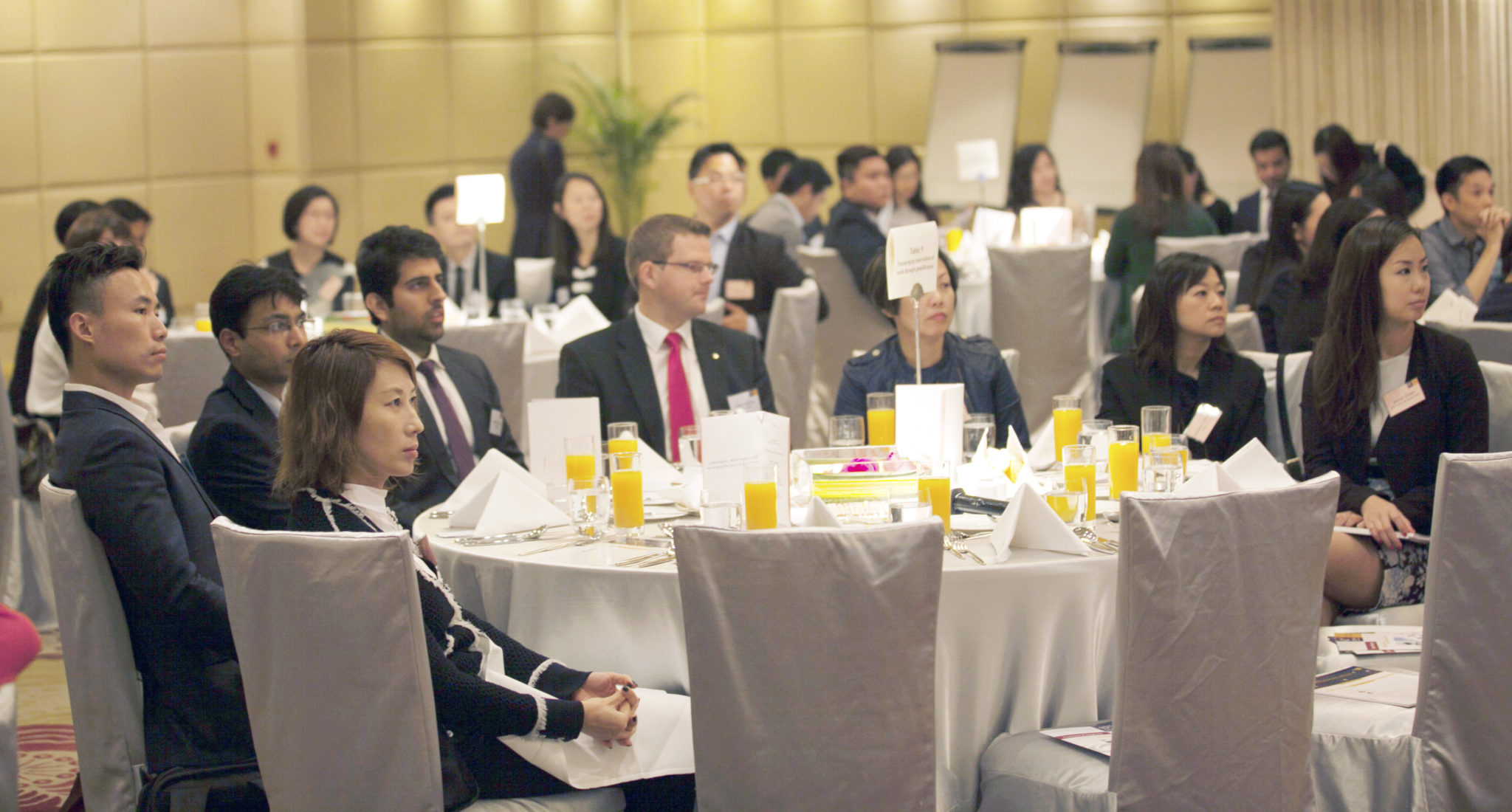
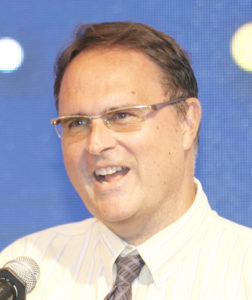
Professor David Ahlstrom, Department of Management, CUHK Business School
Re-imagining the future of the workplace
On Tuesday 25 April over 100 attendees gathered at the Langham Hong Kong for the 2017 HR Leaders Forum hosted by CUHK MBA. The Forum was among the first in Hong Kong to explore the future of gamification, with a unique exchange of ideas between senior HR leaders and an international cohort of CUHK MBA students.
Professor David Ahlstrom, Department of Management, CUHK Business School kicked off the forum which saw a hive of discussion on the challenges that currently exist for HR around gamification, its future and its impact on the workplace of tomorrow. Two keynote speakers: Van Can Quach, Regional HR Manager, Talent Attraction and Strategic Initiatives, AXA Asia and Sunny Ip, Director, Deloitte Consulting shared their insights followed by roundtable discussions, over lunch, which examined six key topics:
- Talent development through gamification
- Talent acquisition and gamification
- Encouraging innovation at work through gamification
- How gamification impacts internal communications—particularly to Millennials
- L&D with gamification
- Aligning employee behaviour with business goals through gamification
Gamification for talent attraction and strategic initiatives
Van Can Quach, Regional HR Manager, Talent Attraction and Strategic Initiatives, AXA Asia shared how the HR team at AXA has leveraged gamification with great success to help attract the best Millennial talent. With traditional recruitment channels becoming less effective, recruitment strategies have been shifted to embrace gamification. Quach explained, “Simply churning out vast amounts of information about company background and culture is no longer effective in promoting a great employer brand to potential hires.” He added, “Today’s shorter attention spans coupled with the perception, particularly among the younger generations, that the insurance sector is not particularly ‘exciting’ means HR has to engage talent right from the get go.”
To meet this need and more effectively communicate the employer brand and corporate culture to potential hires, AXA used gamification to create The Great Global Adventure. Rather than simply directing talent to read information on a career webpage, the online gamified competition was specifically set up by AXA to help attract more young talent to the organisation by engaging them in a series of challenges with the added lure of a round-the-world adventure for the winner. With over 46,000 participants, AXA global adventure game certainly hit the spot in terms of attracting young talent. Pre-launch, Quach noted that 34% of players polled had never even heard of AXA before, yet by the end of the challenge, 86% said they would consider a job at AXA.
The pool of young talent engaged in the challenges were also encouraged to share their endeavours via social media, which helped further strengthen the reach of the employer brand. This social marketing, opened up a huge potential candidate pipeline for AXA. Moreover, the data obtained from the tens of thousands playing the games online also helped build up a profile of these potential hires for HR use in pre-interview screening.
HR has to engage talent right from the get go.
Driving good behaviours and outcomes with gamification
To boost retention, engagement and foster a greater sense of employer loyalty, Sunny Ip, Director, Deloitte Consulting suggested HR take the lead in utilising gaming concepts in multiple aspects of the workspace. He explained, “By applying game design elements and principles into non-game contexts in organisations, HR are able touch on the innate elements of human nature that keeps talent excited and engaged.” Ip explored five different types of game-design elements and principles: competitions, goal-oriented missions, staff progression, staff gratification and collaborative projects.
Ip detailed how gamified collaboration platforms could be established to help facilitate and encourage interaction between staff at all levels and across all business units of an organisation. Such platforms make it easy and fun to give a ‘Thank you’ or a ‘Job well done’ badge to colleagues. He also cited the example of how gamification was being used at Deloitte to help make compliance reporting more ‘fun’ as staff are able to gradually ‘build a tower’ as they successfully add in the correct data to the their compliance reports.
In terms of roll out, Ip advised thinking big and starting small as the way to go. He recommended HR run pilot programmes on a small scale to initially test the water with different gaming concepts in the workplace. This helps ensure success further down the line, is financially more attractive and can be used as evidence of a successful programme when HR goes to pitch a larger-scale role out of the idea to the board. Ip commented, “Getting all the stakeholders onboard is vital; without full buy in from the C-Suite this would severely stunt any staff development programme in terms of its growth and prevent the organisation from leveraging its full potential.”
Gamification can be implemented into communication channels that already exist within an organisation. Ip emphasised, “The concepts of badges, leaderboards, avatars and levelling up can all be utilised within the workplace. Capitalising on such a rewards system—that offers suitable performance-based incentives—enables HR to elicit positive employee behaviour, enhance retention and boost engagement to spearhead organisational success.”
By applying game design elements and principles into non-game contexts in organisations, HR are able touch on the innate elements of human nature that keeps talent excited and engaged.
Aligning employee behaviours
Enhancing employee behaviour and aligning it to business goals is a key objective but also a daunting challenge for HR. Firstly, staff may not be fully aware of what the organisation’s goals actually are. Tammy Lam, Head of HR & Admin, Hutchinson E-Commerce Ltd. commented, “These business goals need to be translated into behaviours. Gamification allows a unique channel to do this.” Once the behaviours for promoting are identified, it is time to get to work building on them. She continued, “If collaboration is a skill we need to promote, we can design that into the actual game, by taking the traditional mechanic of ‘levelling-up’ and evolving it into a team-based exercise.”
Finding the fire
Sadia Liu, Human Resources and Organisation Development, Knorr-Bremse, Asia Pacific Holdings Limited noted, “Young talent often do not know exactly what they are looking for, or how best to embark on and develop their career. They don't yet know exactly where their heart and fire is. Gamification is an ideal tool to help HR discover what that fire is.” Games also help engage talent in the workplace and, when deployed via digital platforms, are particularly well suited to Millennials who have grown up surrounded by tech and are keen to utilise it. Liu added, “Deploying gamification properly can help HR tackle the increasingly difficult challenge of inculcating loyalty amongst Millennials. Younger employees are generally not driven by traditional pulls such as remuneration and job titles and much more likely to career hop than older generations are.” Liu advised developing a regular drip-feed application of gamification to create a steady flow of rewards, learning titbits and career progression mapping for talent in order to maximise engagement and employee loyalty.
Motivating mid-level management
On using gamification to build up innovation within organisations, Phil Guo, Senior Consultant Human Capital Advisory, Deloitte Consulting stated, “To address innovation issues, you usually need to address the mid-level management.” He candidly added, “They often use outdated thinking, feel threatened by younger generations and are very risk averse. Motivating mid-level management is therefore a key challenge for HR.” Guo offered this as an opportunity for HR to encourage different generations to work together more collaboratively. To help achieve this, he advised HR to capitalise on Millennials’ eagerness to embrace gamification and to engage as many employees as possible in reverse mentoring programmes. Internally, Deloitte has used the game World of Warcraft, a collaboration-based team game, to encourage innovation and development across different business units and age ranges throughout the organisation. Guo explained the benefits of gamification in this regard, “Younger generations tend to take on leadership roles within the experience and simultaneously train the older generations and those less accustomed to gaming and gamification.”
Within Hong Kong, innovation has become a major challenge due to the often ingrained mindset that says; if you don’t do anything, you won't make any mistakes.
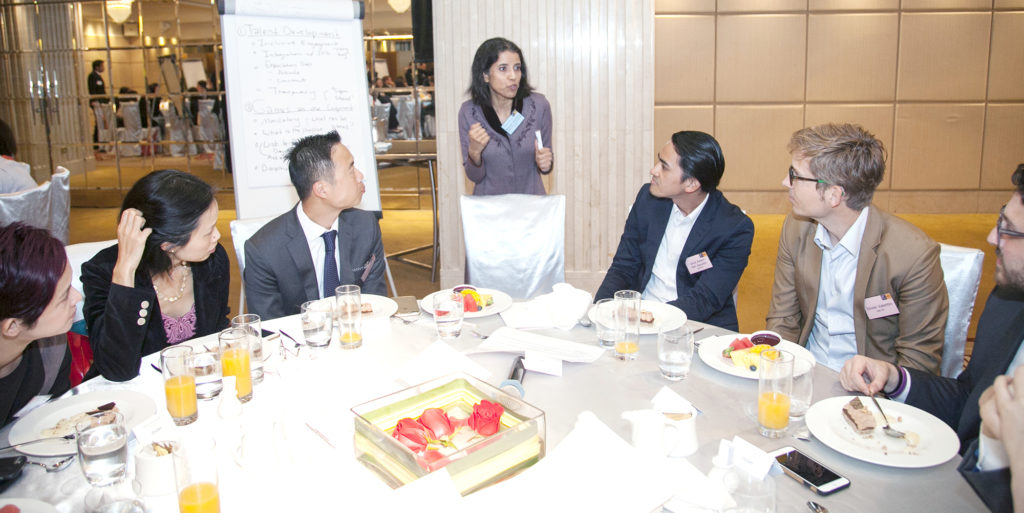
Noorein Inamdar, Associate Professor of Practice in Management, Department of Management, CUHK share her thoughts on talent development through gamification
Leaderboards
The days of employee of the month are almost no more, instead replaced with leaderboards and badge-base systems where employees are encouraged to ‘level-up’ which are much more engaging. Ahlstrom noted, “Within Hong Kong, innovation has become a major challenge due to the often ingrained mindset that says: if you don’t do anything, you won't make any mistakes. This is counterproductive to the creation of fresh ideas.” Gamification offers the opportunity for new levels of transparency for staff to track how they are progressing and how their ideas are developing. In the same vein as social media platforms, colleagues can now instantly give praise and badges to co-workers who they feel have earned it. These accumulations can then be ranked on a leaderboard which helps achieve both recognition and reward for those who rank highest.
Avoiding data overload
Phillipa Penfold, Senior HR Manager, Infosys Consulting noted that HR communication via gamified channels could be a highly effective method of reaching out to employees. However, she cautioned HR to stop and think carefully before diving in and rolling out new gamification platforms—as the way in which they are introduced; their timing and the messages being delivered could make or break any new initiative in the workplace. She explained, “If gamification is used to simply introduce another ‘information channel’ for employees, this runs the risk of ending up simply creating more ‘noise’ in an already congested information zone.” Penfold advised, “HR needs to put themselves in their employee’s shoes, consider exactly what message to deliver, cut through the ‘noise’, grab employees attention and then hold onto it.”
Gamification must be fun! Missing out that key element may reduce the interest of the participants and limit the overall success of the programme.
In terms of rolling out gamification, Lam advised that once senior management are on board, HR’s job is then to consider carefully what the end goal is. To be successful, HR must distil what drives talent within their organisation and clearly define the desired outcomes of any gamification platforms. These outcomes must be aligned with the business goals, because at the end of the day it comes down to what is best for the business. She concluded, “However, the clue is in the name, gamification platforms are games, especially to Millennials. Gamification must be fun! Missing out that key element may reduce the interest of the participants and limit the overall success of the programme."




